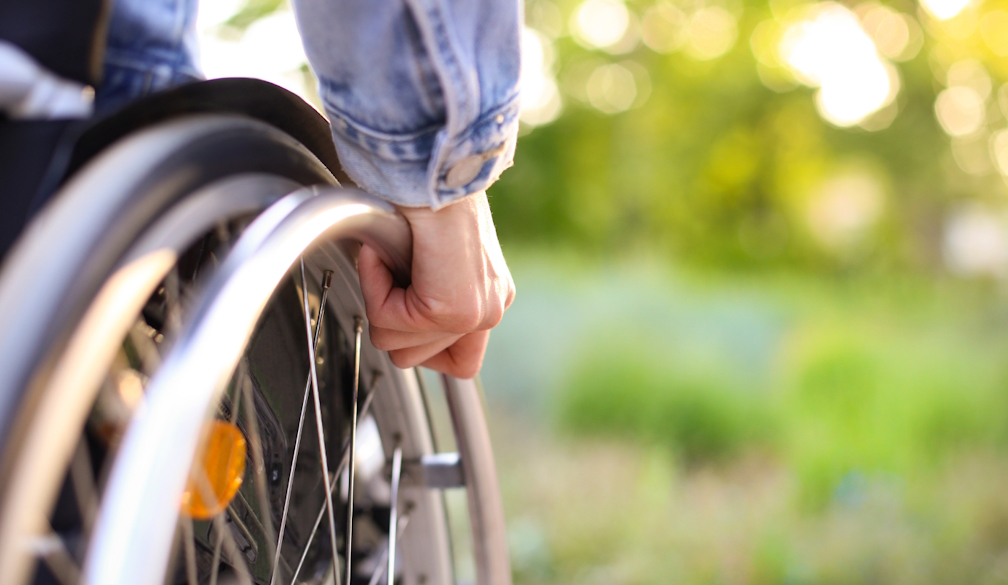In Australia, 1 in 5 road deaths is a motorcyclist. We can make them safer
- Written by Milad Haghani, Associate Professor & Principal Fellow in Urban Risk & Resilience, The University of Melbourne

The proportion of motorbikes on Australia’s roads has remained steady over the last decade[1], about 4.5% of all registered vehicles[2]. But motorcyclists are over-represented in road deaths.
In 2015, they made up 17% of total road fatalities[3]. In 2024, this has crept up to 21%.
Meanwhile, other road users have either maintained a steady proportion of road fatalities or – in the case of car passengers – declined since 2015.
So, less than one in 20 vehicles is a motorbike. But one in five people killed in a road crash rides one. What’s going on – and can they be made safer?
Why are motorcyclists more vulnerable?
On a motorbike, people lack the protection of an enclosed vehicle. This makes them more vulnerable to injuries, including to the head, chest and – most commonly[4] – legs and feet.
Road conditions can also make a significant difference to motorcyclists. With only two points of contact with the road, motorbikes have less stability than four-wheeled vehicles.
Even minor defects – such as potholes, uneven road surfaces or gravel – can reduce traction, cause skidding or lead to a loss of control, particularly when cornering.
For example, a 2022 study of 188 motorcycle crash sites in Victoria showed sharper curves were linked[5] to a higher risk of crashing. A study of over 1,400 motorcycle crashes[6] in Tasmania from 2013-16 found road surface defects were a contributing factor to 15% of all crashes, and 24% of single-vehicle crashes.
Age and experience also play a role
In a car, a driver’s greater experience level[7] is linked to greater safety. Evidence shows this may be[8] particularly important for motorcycle riders as they manoeuvre and balance their vehicle and respond to road conditions.
The Tasmanian study[9] also showed young riders aged between 16 and 25 were disproportionately at risk. They accounted for just 11% of registered motorcycles but 42% of motorcycle crashes.
Their crash rate was more than three times that of riders aged 26–39 – and six times higher than riders over 40. They made up more than half of all incidents on curves.
Alarmingly, nearly a third of riders who died on South Australian roads between 2016 and 2020 were unlicensed[10].
Can motorbikes be made safer?
Modern cars have passive safety features, such as airbags and crumple zones, to reduce injuries. Technology – including collision avoidance systems and advanced braking – has also reduced fatality rates for drivers and passengers[12].
In contrast, motorbikes rely almost entirely on a rider’s skill, protective gear and the road conditions.
In recent years, motorcycle manufacturers have been introducing “advanced rider assistance systems[13]”. These adapt similar features used in cars, such as adaptive cruise control (which adjusts speed and distance from vehicles ahead) and forward collision warnings.
However, these systems are still relatively new, and whether they can reduce crashes and fatalities is yet to be robustly studied.
Many motorcyclists are also hesitant to adopt these kinds of technologies[14] due to concerns they may lose control or become over-reliant on them. Cost is also a factor, as rider assistance systems are still mostly limited to premium motorcycles.
Safety is everyone’s responsibility
Currently, motorbike riders continue to rely on infrastructure quality, rider training and skills, risk awareness, and protective gear[15] as their primary safety measures[16].
Stronger regulation and enforcement of licensing, in conjunction with post-licence training[17], have been shown to help reduce motorcycle fatalities.
This includes implementing a graduated licensing system[18], which imposes restrictions on novice riders and gradually lifts them as they gain experience and maturity.
Post-licence rider training courses on defensive riding strategies[19] (such as lane positioning, scanning and buffering) could be complements to basic licensing processes[20].
And let’s not forget: safety is not solely in the hands of motorbike riders.
An analysis of more than 5,000 two-vehicle motorcycle crashes in the United States found the motorcyclist was at fault in less than one in three cases[21].
Educating drivers of other vehicles[22] matters just as much as motorcyclists themselves. Creating safer roads depends on mutual awareness and responsibility.
Sharing the road responsibly[23] means drivers should:
-
regularly check mirrors and blind spots for motorcycles, especially before changing lanes or turning
-
maintain a safe following distance, understanding that riders may need to swerve to avoid hazards like oil, gravel or potholes
-
allow the same space when overtaking a motorcycle as they would a car
-
stay alert for lane filtering — where riders legally travel between lanes of slow or stationary traffic at low speeds.
Recognising motorcyclists as vulnerable road users[24], alongside pedestrians and cyclists, is key to making roads safer for everyone.
References
- ^ over the last decade (www.abs.gov.au)
- ^ all registered vehicles (www.bitre.gov.au)
- ^ they made up 17% of total road fatalities (app.powerbi.com)
- ^ most commonly (www.sciencedirect.com)
- ^ showed sharper curves were linked (research.monash.edu)
- ^ 1,400 motorcycle crashes (dro.deakin.edu.au)
- ^ greater experience level (www.sciencedirect.com)
- ^ this may be (injuryprevention.bmj.com)
- ^ The Tasmanian study (dro.deakin.edu.au)
- ^ were unlicensed (thinkroadsafety.sa.gov.au)
- ^ Adam Calaitzis/Shutterstock (www.shutterstock.com)
- ^ reduced fatality rates for drivers and passengers (injuryfacts.nsc.org)
- ^ advanced rider assistance systems (www.sciencedirect.com)
- ^ hesitant to adopt these kinds of technologies (www.sciencedirect.com)
- ^ risk awareness, and protective gear (www.youtube.com)
- ^ primary safety measures (ridetolive.nsw.gov.au)
- ^ post-licence training (search.informit.org)
- ^ graduated licensing system (www.mrasa.asn.au)
- ^ defensive riding strategies (eprints.qut.edu.au)
- ^ complements to basic licensing processes (search.informit.org)
- ^ in less than one in three cases (www.sciencedirect.com)
- ^ Educating drivers of other vehicles (www.sciencedirect.com)
- ^ Sharing the road responsibly (www.nsw.gov.au)
- ^ vulnerable road users (www.parliament.vic.gov.au)




















